Twiddle Blog
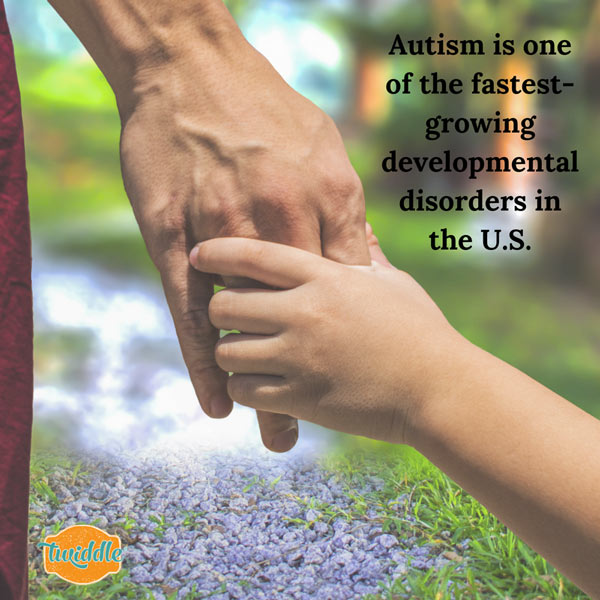
5 TIPS TO AID CHILDREN WITH AUTISM
All parents and guardians want what’s best for their kids. Parents and guardians of kids on the spectrum are no different. Although we may want what’s best for our kids, sometimes, especially with autism, it can be hard to figure out what works. We’ve put together a list of five tried and true tips that have helped others in similar situations.
- Keep it fun. Therapeutic play allows kids to do what they like while building skills. These skills can be social, reciprocal, and even imaginative.
- Positive reinforcement works. This is true for kids on and off the spectrum. Praising a child for doing something well will leave a lasting and positive association with that behavior.
- Stick to a schedule. Kids with autism feel comfortable with and often respond well to a regular schedule. It is comforting and reassuring to know what and when is coming next.
- Take your kids with you. Exposure to “the real world” is critical and teaches valuable coping lessons.
- Be patient. Apologies for the cliché, but every kid is different. Unless you’re very, very lucky, the first thing you try probably won’t be a perfect fit. Be consistent, stay creative, and you will find something that works for you and even more importantly something that works for your kid.
Twiddle, a Certified Autism Resource, has worked for many parents and guardians navigating this territory. Twiddle is a therapeutic sensory and memory support aid, that can help kids with autism stay stimulated, self-regulated, and comfortable in any situation. Working Twiddle into your routine allows for both portable and therapeutic play. While every kid is different, a lot of kids love Twiddle (parents and guardians too!)
“In a sea of hard choices that are as unique as every child, a Twiddle is a safe, easy choice to add to the comfort toolbox.” – Heather, a parent
RELATED LINKS
https://www.webmd.com/brain/autism/parenting-child-with-autism#1
http://www.bergerlearning.com/docs/BergerLearning_ActivityScheduleOptimized.pdf
https://www.verywell.com/play-therapy-and-autism-the-basics-260059
https://www.autismspeaks.org/blog/2014/07/23/11-tips-new-autism-parents
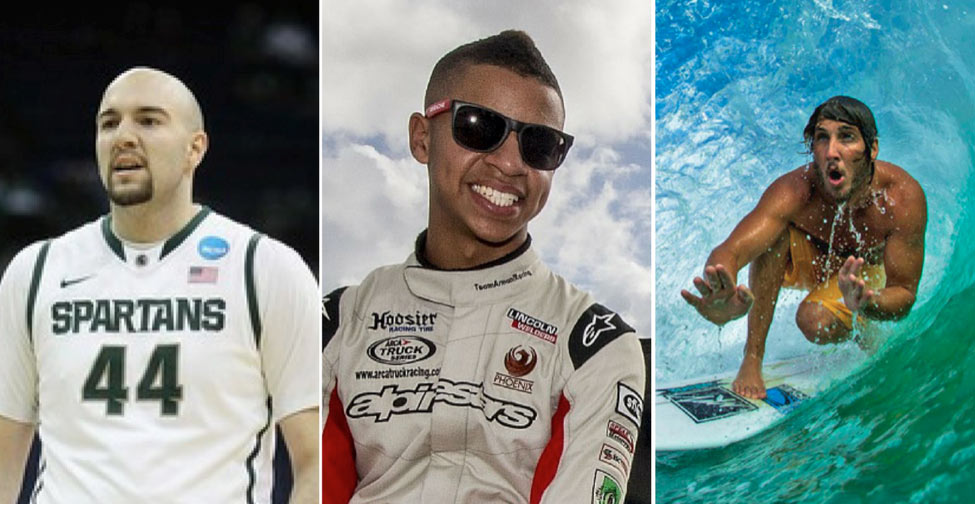
SPORTS AND AUTISM
Parents with children who have autism often wonder if getting their kid involved in sports is a good idea. Sports provide physical exercise which is good for the body and mind, and also can teach cooperation, dedication, and leadership skills. However sports can be challenging for kids with autism because of sensory sensitivity, social communication difficulties, and problems with coordination. The truth is there are solutions to sensory sensitivity, compromises, and ways to overcome these obstacles. For instance, if social communication is your concern there are team and non-team sports that are not dependent on high levels of communication such as track & field, martial arts, and horseback riding. It is also possible for people with autism to become successful athletes in team sports like basketball and soccer as well. With supportive teammates and coaches and enough training, teams can develop effective ways to communicate and the athlete can develop the skills needed to excel in the sport. There are many skilled athletes with autism who have not only competed but excelled in team and non-team sports.
Here are examples of athletes with autism who became some of the best competitors in their sport.
Clay Marzo is a surfer who was raised in Maui, Hawaii and was formally diagnosed with asperger’s at age 18. Marzo’s has had remarkable accomplishments throughout the surfing community, including becoming the National Scholastic Surfing Asso ciation National Champion in 2005, an X Games gold medalist in 2007, and the top finisher at the World Qualifying Series in 2009. Marzo has also wrote a book titled Just Add Water: A Surfing Savant’s Journey with Asperger’s that was published in 2015. In an interview he said “I hope the book will help other people who are similar to me, and if not them, then to their families so they can get a better understanding of what it can be like.” Marzo’s friends and peers find his straightforwardness refreshing and his surfing abilities insurmountable. He continues to pave the way for both professional surfers and people with autism.
ciation National Champion in 2005, an X Games gold medalist in 2007, and the top finisher at the World Qualifying Series in 2009. Marzo has also wrote a book titled Just Add Water: A Surfing Savant’s Journey with Asperger’s that was published in 2015. In an interview he said “I hope the book will help other people who are similar to me, and if not them, then to their families so they can get a better understanding of what it can be like.” Marzo’s friends and peers find his straightforwardness refreshing and his surfing abilities insurmountable. He continues to pave the way for both professional surfers and people with autism.
Anthony Ianni was diagnosed with autism at the age of 4. According to his doctors it was unlikely that Anthony would graduate high school and would probably never be able to live independently. He was bullied in school growing up as well but his family was determined to help him be successful and overcome his ch allenges. Anthony’s parents were both athletes and supported his desire to play basketball competitively. Playing for Michigan State University under coach Tom Izzo, Anthony Ianni became the first division 1 college basketball player with autism. He won two Big Ten Championships, a Big Ten Tournament Title and was the recipient of the 2011 Tim Bograkos Walk On Award. He graduated from Michigan State University with a Bachelor’s Degree in Sociology and now is one of the most sought after motivational speakers addressing bullying, perseverance, and autism awareness.
allenges. Anthony’s parents were both athletes and supported his desire to play basketball competitively. Playing for Michigan State University under coach Tom Izzo, Anthony Ianni became the first division 1 college basketball player with autism. He won two Big Ten Championships, a Big Ten Tournament Title and was the recipient of the 2011 Tim Bograkos Walk On Award. He graduated from Michigan State University with a Bachelor’s Degree in Sociology and now is one of the most sought after motivational speakers addressing bullying, perseverance, and autism awareness.
Armani was diagnosed with autism spectrum disorder when he was two-years-old. He was considered nonverbal and had trouble processing different stimuli simultaneously. Armani Williams is the first NASCAR driver that is openly diagnosed with autism. He realized his passion for racing first driving go-karts but then advanced to bandalero-type vehicles and then late models. He has competed in the ARCA Truck Pro Series and the NASCAR Driver for Div ersity Combine, for which he is expected to return in 2018. Currently Armani has 18 wins, 2 championships, and a very bright racing career ahead of him. Armani is also a philanthropist who, with the help of his family established the Race4Autism Foundation in 2015. The Race4Autism Foundation aims to enrich the lives of people and families affected by autism spectrum disorder through solution-based opportunities and raising awareness of autism.
ersity Combine, for which he is expected to return in 2018. Currently Armani has 18 wins, 2 championships, and a very bright racing career ahead of him. Armani is also a philanthropist who, with the help of his family established the Race4Autism Foundation in 2015. The Race4Autism Foundation aims to enrich the lives of people and families affected by autism spectrum disorder through solution-based opportunities and raising awareness of autism.
Follow Twiddle on Facebook (Twiddle Therapeutic) and Instagram (@4Twiddles) to learn about more about Twiddles and to stay informed from our blog.
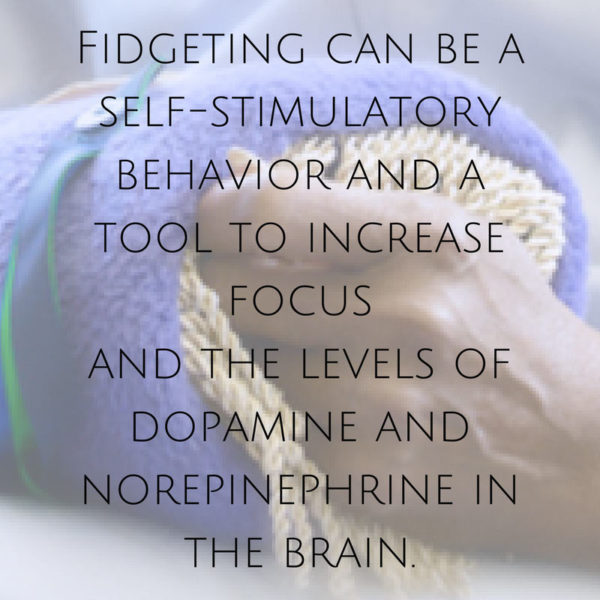
MOVEMENT, MEMORY, AND COGNITIVE FUNCTIONING
Physical movement and well-being can have a direct and positive impact on mental health, cognitive functioning, and memory. Physical movement can include anything from strenuous activities like exercising to actions as small as fidgeting and hand use. Using movement as a method for improving well-being has the potential to heighten quality of life for anyone including people with Alzheimer’s Disease, autism, and ADHD. Reducing stress and anxiety while stimulating the mind can decrease the severity of symptoms that coincide with certain conditions as well as alter the experience of living with a disorder or disease.
Elevated intensity and endurance of muscle activity including exercise has been proven to directly impact the brain and mental function through physiological changes. Alterations in metabolic processes and the autonomic nervous system changes and effects hormone levels, the immune system, neurotransmitters and endocannabinoids. The American Academy of Neurology released research that found that exercising at least twice a week improved thinking and memory in people with mild cognitive impairment, and has the potential to slow the rate at which Alzheimer’s or dementia progresses. Exercise also improves cognitive thinking by boosting mood, improving sleep quality, and reducing stress and anxiety.
Hand use and fidgeting is movement that also improves mood, memory, and concentration, but not in the same way. Fidgeting can be a self-stimulatory behavior and a tool to increase focus and the levels of dopamine and norepinephrine in the brain. Fidgeting is a behavior sometimes seen in people that have sensory-related conditions such as autism. Certain textures and other sensory inputs can be calming and used to counteract anxiety to enable better focus and feelings of contentedness. Gardening, knitting, fixing things, and playing an instrument are all examples of hand use. Active and functioning hands initiate thinking that can often be creative and joyful. Such activities are great ways to modify depression and decrease stress.
Twiddles® are therapeutic sensory and memory support aids and an excellent tool for developing fine motor control and skills, and improving strength and dexterity. Twiddles keep youngsters and elders active and stimulated as they move their hands, engage with fidgets and explore Twiddles’ many textures and features. Follow Twiddle on Facebook (Twiddle Therapeutic) and Instagram (@4Twiddle) to learn about more about Twiddles, and to stay informed with our blog.
- buildpt. “Exercise May Improve Your Memory.” Ideal Motion PT, 2 Feb. 2018,
- Rotz, Ph.D. Roland, and Sarah D. Wright. “The Body-Brain Connection: How Fidgeting Sharpens Focus.” ADDitude, ADDitude, 9 Feb. 2018
- Shafir, Tal. “Using Movement to Regulate Emotion: Neurophysiological Findings and Their Application in Psychotherapy23.” Frontiers in Psychology, Frontiers Media S.A., 23 Sept. 2016
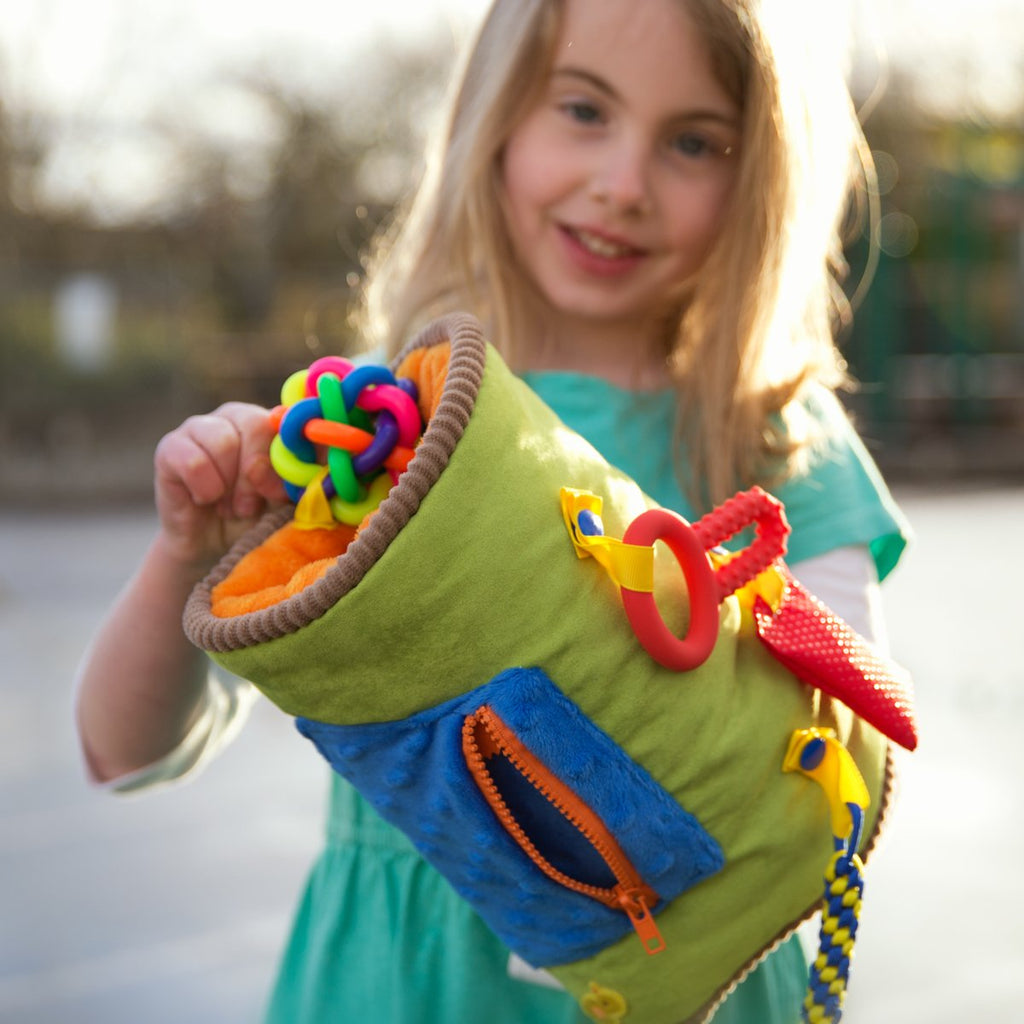
AUTISM, EARLY INTERVENTION, AND ABA THERAPY
We had the opportunity to interview Alex Benton, an applied behavioral analysis therapist who works in a clinic located in Portland that focuses on early intervention for children with autism. She provided excellent insight on processes used to overcome some of the challenges that can come with having autism, and how every kid is in their own unique place on the spectrum. She emphasized that every clinic has varying methods of treatment as children have different symptoms and behaviors. Thank you, Alex, for your time and expertise!
Where do you work?
I work at a clinic for children with autism that focuses on early intervention. We do ABA (applied behavior analysis) therapy for mainly lower–functioning kiddos with autism.
What is the age range of the kids you work with?
The kids that come into our clinic are between 0 and 9-years-old. The average kid will come in around 2-years-old and the majority of kids we work with are 3 and 4-years-old.
What do you do on a day to day basis?
Every day varies, but I normally start my morning with group exercises with little kids ranging from 2-3 years old. We do regular preschool activities like arts and crafts and go outside. We like to do different motor activities as well as encourage social and peer play.
Around lunch time I will either be sitting with a group of kids encouraging social interaction and discussion or doing a one-on-one session. My one-on-one sessions are spent with kids with feeding disorders who either only eat a certain type of food or only in a specific environment. We try to gradually make them more comfortable eating a wider variety of foods and break those limiting habits. For example, one child would only eat potatoes, so we started offering him other foods that looked similar and he was able to slowly change his eating habits from there.
In the afternoon I will be doing one-on-one sessions focusing on individualized treatment plans. The treatment plans center around everyday skills and processes that kids need help developing such as getting dressed, brushing teeth, and toileting. We will also do fine motor and gross motor exercises depending on what the child needs to improve on. Fine motor skills will include things like tying shoes and buttoning shirts, and gross motor skills include activities like walking and yoga.
Do you have any methods to keep the kids you work with calm and content?
When kids are tantruming or in emotional distress we work on self-regulatory skills like taking deep breaths, doing yoga, or getting them to verbally express their emotions. Sometimes kids respond well to being held and hugs, which we are allowed to do because it will calm them down and make them feel comfortable.
We have safety care plans for kids with self-injurious behavior such as hair-pulling or repeatedly banging their head against a wall. For those more critical situations we will follow our protocols and procedures set in place.
Do you take any measures to limit the amount of sensory stimulation in the environment?
Our goal is to desensitize kids who are sensitive to certain stimuli. Through my experience the main stimuli that kids are sensitive to are noisy rooms and being around a lot of people. For these kids we might take them into a noisy room or outside for a short period of time and gradually try to stay in these rooms and environments for longer periods of time. People with autism will regulate their own contentedness in certain situations through STIMMing (Self-stimulatory behavior) such as blinking really fast, spinning in circles, and repetitive hand movements. We are trained to extinguish these behaviors, but this is controversial because it is something that these kids find helpful and something that everyone does to some degree. I think that we all need to be more accepting of neurodiversity and the behaviors that come with that.
Is there ever any conflict between kids? What methods do you have of resolving or mitigating conflict?
We will see some conflict between the older kids who might be fighting over a toy or having a disagreement. We work with them a lot on how to be flexible, communicate, and share. I think they engage in conflict with therapists more often because we are the ones telling them what to do.
Do you do any social interaction/ communication exercises?
Yes, we will play a lot of traditional kids’ games like Hot Potato and Ring Around the Rosie. We will also do outdoor activities like obstacle courses and group walks. When we are walking around outside we will play I Spy and talk about things we notice and see. Some of the lower-functioning kids can’t talk so we teach everyone a little bit of sign language which is really important so everyone can be and feel included.
What other kinds of professionals do you work with on a daily basis?
I work with other ABA therapists, occupational therapists, and SLPs (speech language pathologists). We will often also be in touch with primary care physicians and teachers. Sometimes therapists will go to school with the kids to meet their teachers and better understand their behavior in public.
If you could give someone advice who is starting work as an ABA therapist what would it be?
Be patient. It is not an overnight process. If you are not a patient person this field is not for you.
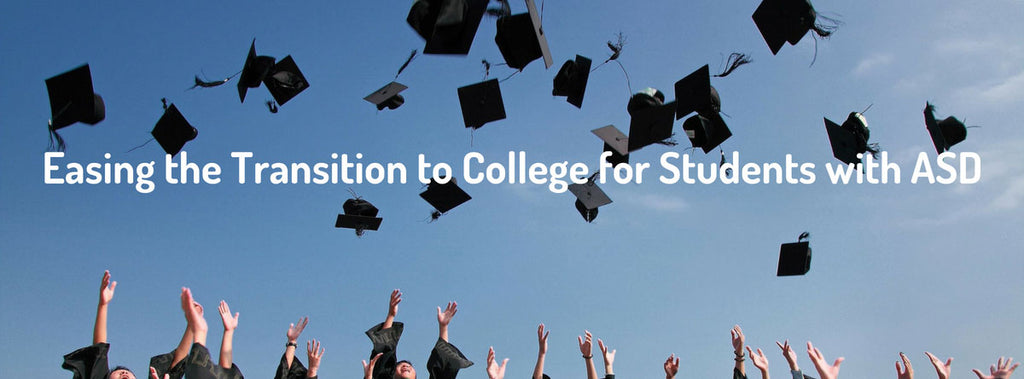
EASING THE TRANSITION TO COLLEGE FOR STUDENTS WITH ASD
College can be an exciting and challenging experience for young adults. Students often live independently for their first time, tackle academic challenges, and engage with peers in new activities and social events. For a student with autism, these experiences can be especially challenging. They have to change their routine, meet deadlines, and take on new responsibilities. Over the next decade, there will be approximately 550,000 children with autism in the United States transitioning into adulthood. Obtaining a degree is a significant predictor of positive adult outcomes for people with ASD. It increases their chances of getting a job, becoming financially stable, and being able to live by themselves. Planning for college doesn’t just start with applications or touring campuses senior year. It begins with early intervention, continuous progress throughout childhood, as well as abiding by an Individualized Education Program. Since every child with autism is unique, the programs, plans, and colleges that work for them will be too. Online schooling might even be optimal for those students unable to go out on their own. High school is an excellent time to start training your child to practice being more independent with their schoolwork and socializing with friends. Building social and communication skills will help with group projects and class participation in college. Aside from your awesome and dedicated parenting, there are many services, programs, and tools to help prepare your child for college. Today we are going to discuss pre-college programs, colleges with autism-support programs, and scholarships.
PRE-COLLEGE PROGRAMS:
There are multiple several-week programs and camps where young adults with autism can practice socializing, teamwork, and get a taste of the college environment. These camps are often offered the Summer before the student’s freshman year and teach skills that improve independence and self-advocacy. We have provided a couple examples below:
Beyond Akeela
Beyond Akeela blends elements of a traditional summer camp with components of a teen tour. Participants are part of a tight-knit community, in which they practice post-secondary life skills, experience adventure, and thrive socially.
Location: Bala Cynwyd, Pennsylvania & Appleton, Wisconsin
http://beyondakeela.com/quirky-teens-summer-program/
Summer @ CIP
CIP is one of the most comprehensive programs in the world for assisting young adults with learning differences to succeed in college, employment, and independent living.
Young Adults with Asperger’s, ADHD and Learning Differences learn valuable skills to make a successful transition to college and beyond during CIP’s Summer Programs.
Locations: Berkshire County MA, Brevard FL, Bloomington IN, Berkeley CA, & Long Beach CA
https://cipworldwide.org/summer/
AUTISM SUPPORT PROGRAMS:
Autism support programs can offer a range of services tailored to a student’s needs including peer mentoring, ABA therapy, academic tutoring, routine check-ins, and organizing events for students to socialize. There are colleges with these integrated programs all over the United States. Here are several examples of the most acknowledged college autism support programs:
University of Alabama: ASD College Transition and Support (ACTS) Program
The UA-ACTS program provides individualized services to help students develop appropriate skills for self-advocacy, daily living, and social interactions that will contribute to their success as an independent adult.
https://autism-clinic.ua.edu/uaacts/
Marshall University: The College Program for Students with Autism Spectrum Disorder
Students participating in the program have met acceptance criteria for Marshall University and have been admitted to The College Program through a separate application process. The program uses a positive behavior support approach to assist participating students. Social, communication, academic, leisure and personal living skills are assessed through person-centered planning.
https://www.marshall.edu/collegeprogram/overview/
University of West Florida: Argos for Autism
The Argos for Autism Program (AAP) is a Beyond Access service offered by the Student Accessibility Resources that provides academic, social, life skills, and career planning support to students with autism who attend the University of West Florida. The goal of the AAP is to enhance their college experience by providing assistance with navigating the college experience.
https://uwf.edu/offices/student-accessibility-resources/beyond-access/argos-for-autism/
SCHOLARSHIPS
It never hurts to have financial assistance when sending a child to college. Aside from governmental general funding, there are many scholarships available to students on the spectrum. There are nationwide scholarships offered by The Autism Society of America, the Doug Flutie Jr. Foundation, and Eden Autism Services. There are also local scholarships offered in major cities and schools throughout the United States. The Autism Society of New Hampshire and Lower Delaware Autism Foundation are examples of locally offered scholarships. Below is a list of scholarships offered throughout the U.S. for students with autism pursuing postsecondary education.
https://a2autismfoundation.wordpress.com/tag/scholarships/
- Dan Archwamety Post-secondary Education Scholarship: http://autismnebraska.org/dan-archwamety-post-secondary-education-scholarship/
- Jack’s Place for Autism Foundation:
https://www.jacksplaceforautism.org/scholarships
- The Autism Society of Iowa:
http://autismia.com/scholarships/
- Connie Pitt Memorial Scholarship:
http://www.autismfoxvalley.org/scholarships/
Sources:
- “How Can Students with Autism Be Supported through College?” ScienceDaily, ScienceDaily, 31 Jan. 2018, www.sciencedaily.com/releases/2018/01/180131110351.htm.
- “5 Scholarships For Students With Autism / Aspergers.” College Raptor Blog, 18 May 2018, www.collegeraptor.com/paying-for-college/articles/scholarships/5-scholarships-students-autism-aspergers/.
- “5 Scholarships For Students With Autism / Aspergers.” College Raptor Blog, 18 May 2018, www.collegeraptor.com/paying-for-college/articles/scholarships/5-scholarships-students-autism-aspergers/.
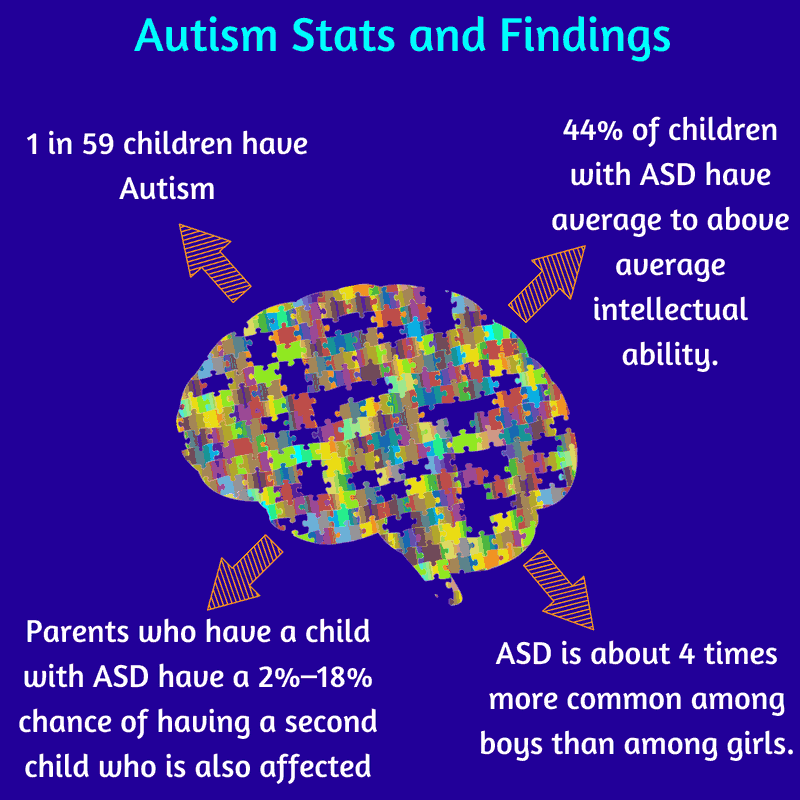
AUTISM STATS AND FINDINGS
What is Autism?
Autism or Autism Spectrum Disorder (ASD), is characterized by a range of conditions affecting a person’s social skills, ability to communicate, and an array of behavioral patterns. Symptoms of autism normally appear between 2 and 3 years of age but in some cases it can be diagnosed as early as 18 months. Every person is affected by autism differently as the disease displays a spectrum of strengths, challenges, and symptoms with varying severities. Seeking evaluation as soon as symptoms are noticed is very important since early intervention can have a significant positive impact on any child with ASD.
Below we have compiled some of the most recent findings and stats regarding autism from credible sources including Autism Speaks and Centers for Disease Control and Prevention.
Prevalence:
-
1 out of 59 children in the United States have autism.
-
An estimated 1 out of 42 boys and 1 in 189 girls are diagnosed with autism in the United States.
-
Autism is the fastest-growing serious developmental disability in the U.S.
Kids With Autism After High School and In Their Early 20s
-
32% of kids with autism get a paid job within the first two years after graduating.
-
31% of kids with autism live apart from parents with or without supervision.
-
76% of kids with autism socialize with friends through meetups, phone calls, & activities.
-
36% of kids with autism attend any sort of postsecondary education.
Risk Factors and Characteristics
-
44% of children identified with Autism has average to above average intellectual ability.
-
Parents who have a child with ASD have a 2%–18% chance of having a second child who is also affected.
-
About 10% of children with autism are also identified as having genetic and chromosomal disorders including Down Syndrome, Fragile X Syndrome, and Tuberous Sclerosis.
Economic Costs:
-
Autism costs the nation over $238 billion per year, a figure expected to significantly increase in the next decade.
-
Children with ASD have medical expenditures that exceeded those without ASD by an average of $4,110–$6,200 per year.
-
Intensive behavioral interventions for children with ASD cost $40,000 to $60,000 per child per year.
Sources:
- “What Is Autism?” Toys’R’Us | Autism Speaks, 31 May 2012, www.autismspeaks.org/what-autism.
- “Autism Spectrum Disorder (ASD).” Centers for Disease Control and Prevention, Centers for Disease Control and Prevention, 26 Apr. 2018, www.cdc.gov/ncbddd/autism/data.html.
- “Talk About Curing Autism (TACA).” Talk About Curing Autism TACA, 2018, tacanow.org/autism-statistics/.
- “Indicators Report: 1 in 3 Young Adults with Autism Disconnected from Work and School.” Toys’R’Us | Autism Speaks, 21 Apr. 2015, www.autismspeaks.org/blog/2015/04/21/report-1-3-young-adults-disconnected-work-and-school

